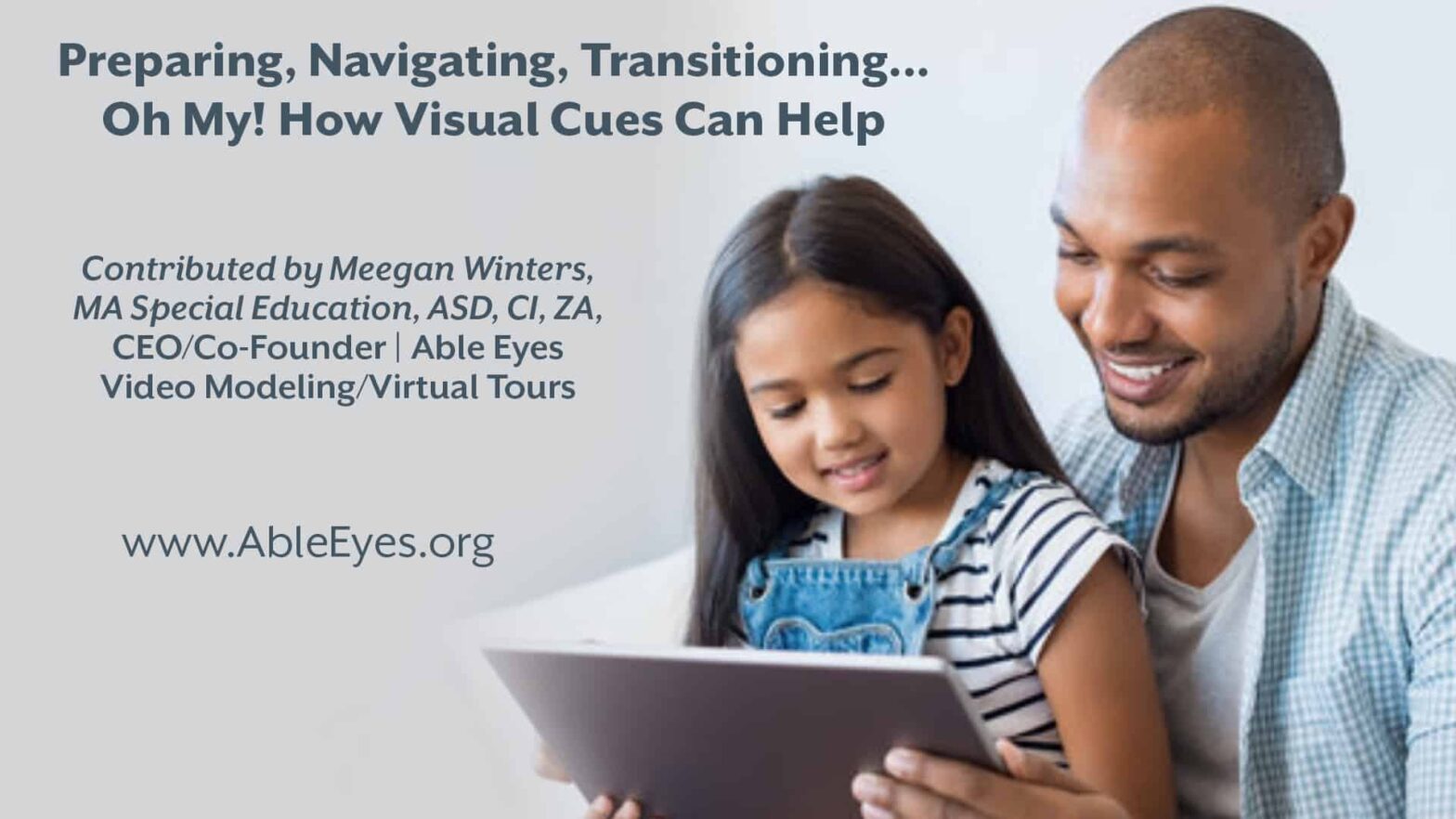Meegan Winters, MA Special Education, ASD, CI, ZA, CEO/Co-Founder Able Eyes (www.AbleEyes.org) Video Modeling/Virtual Tours
If you are a parent, a caregiver, a teacher, or a relative of a person with Autism Spectrum Disorder (ASD), you already know that transitions, changes in routine and new experiences can be extremely stressful. We want the best for our loved ones. All of the experiences we remembered as children.
All of the field trips that the other children are going on. But, at what expense? Causing stress for everyone involved? Crying? An anxiety attack? A tantrum?
Research shows that using visual cues during a transition can decrease challenging behavior and increase compliance following transition demands. Visual cues can include but are not limited to: picture cards, physical gestures, tactile items, video, and/or other means of technology. These methods can assist individuals with ASD during transitions to redirect attention to another activity, oftentimes resulting in less stress for the individual transitioning.
Picture Cues
Picture cues can vary significantly; stick figures, animated pictures, or actual photographs all serve as powerful tools to help someone on the spectrum redirect attention and prepare for an upcoming transition. Thanks to the internet, we have unlimited access to such pictures. Printing them off to carry in a purse or simply pulling them up on a phone can be the difference between a stressful experience or an enjoyable experience. Using simple language such as “ library is next” while holding up a picture of a library will redirect attention to the upcoming event, while providing time to adjust mentally before being physically required to transition.
Physical Gestures
Simple, consistent, clear physical gestures can serve as another way to provide visual cueing. Prior to a transition; something as simple as a point in the direction of the transition paired with adequate processing time (this can be up to 30 seconds or even longer…so be patient).
Tactile Transition Items
If tactile items resonate with your loved one or they have a vision disability, then this could be your answer! Start a shoebox of items representing transitions. Examples might be:
Transition Tactile Item
Car Ride Hot Wheels car
School/Bus Ride Toy bus
Walk Mr. Potato Head Shows
Grocery Store Plastic grocery bag (be careful with safety using a bag)
Meal Time Plastic apple
Brush Teeth Toothbrush
Shower Loofa
This shoebox can be carried with you everywhere. Include small items representing each transition planned for the day. Prior to mentioning or starting a transition, hand the item to your child, then allow enough time for processing before starting the transition. This system may take some time to practice consistently before the child understands the transition associated with each item so be patient…
Video Cues
Video Modeling is a research based strategy for teaching individuals on the spectrum that tend to learn best through visual means. The internet houses endless options for video modeling videos demonstrating how to complete a skill which can also be used as a transition cue (many are free).
An example might be “going to the dentist.” Prior to going to the dentist, view the “What to Expect When Going to the Dentist” video showing what one might experience. This will mentally prepare your child for what’s to come. BE CAREFUL what you search though!!! Imagine trying to teach your child how to take his/her shirt off as an independence skill. As you can imagine, you might come up with videos you’d prefer not to see…
Apps
Have you ever heard the term “There’s an App for That!”? Well…that is true for transition tools as well. Visual schedules, visual cues, and picture libraries can all be found in the App store.
Virtual Tours
Lastly, virtual tours can be a life saver as a transition tool and easily accessible from your phone! If you have ever explored Google Maps through the streets of your local town, now you can see inside of buildings! Businesses that choose to do so can have a virtual tour of their business or office to allow visitors to explore the space prior to physically visiting. Incredible right? Check ahead of time on the business website, Google Maps, or Able Eyes to explore inside so you can “Know Before You Go.”
Now more than ever, during the COVID-19 Pandemic, we as service providers and caregivers need to be prepared for the unexpected. Doctor visits may not look the same, a trip to the grocery store may be curbside, school may be online… Pretty much life as we knew it may have changed in 2020. This will (and has) caused even more unexpected transitions, unknown expectations, and uncertainty for all people. If your child is struggling, please know it is to be expected. Choose from any or all of the techniques above to help alleviate

